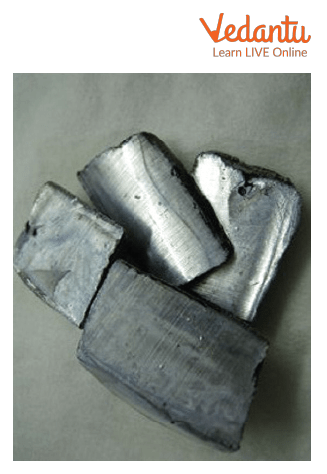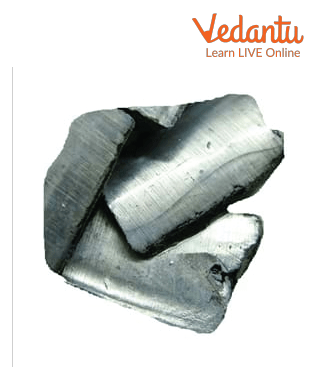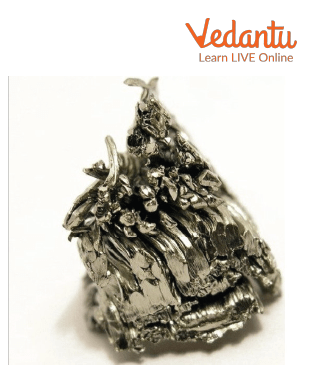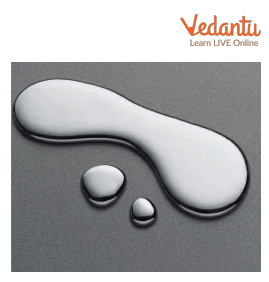




Interesting Facts About Metals and Nonmetals
Metals have existed for centuries, valued for their strength, durability, versatility, and electrical conductivity. The metal is used in industrial and architectural applications such as building construction, bridges, appliances, machinery, electronics, plumbing, HVAC, automobiles, aircraft, military equipment, and others using sheet metal and other forms. About 75% of all the elements in the periodic table are metals.
A total of 20 non-metals found in the earth normally exist in a solid or liquid or gaseous state at room temperature depending on the element. These are usually brittle and non-lustrous in the solid state.
Here, we will discuss the properties of metals and their facts. We have already told you some interesting facts related to metals as well as nonmetals. So, let's start with facts about metals and their general properties.
Interesting Facts About Alkali Metals
The group of elements lithium, sodium, potassium, rubidium, caesium, and francium in the periodic table are called alkali metals. This group is located in the s-block of the periodic table.
Alkali metals have similar properties. All of them are soft, shiny, and highly reactive at standard temperature and pressure and due to their softness can be easily cut with a knife.
Since they are quick to react, they should be stored in oil, etc. to prevent air and chemical reaction between them.
It is found naturally in salts as a non-free element. All the discovered alkali metals occur in nature in the order of their amounts, with sodium being the most common, followed by potassium, lithium, rubidium, caesium, and lastly, francium, the rarest due to its high radioactivity.
Physical Properties of Metals
The following are some of the well-known physical properties of metals.
Metals are good conductors of heat and electricity.
Metals are malleable and ductile.
Metals have a special kind of lustre.
Except for sodium and potassium, all metals have high melting and boiling points.
All metals except mercury are solid at room temperature.
Generally, all metals except sodium and potassium are quite hard.

Sodium.

Potassium.
All metals except potassium have high density.
Metals are resonant i.e. sound is produced when an object hits the metals.
Generally, all metals are brown or silver except copper and gold.
Facts About Rare Earth Metals
Rare earth elements are also called rare earth oxides, or lanthanides.
Yttrium and Scandium are usually included as rare earth metals.

Scandium
There are 17 sets of nearly indistinguishable shiny silvery white and soft heavy rare earth metals.
These metal elements and their compounds have no known biological function. Water-soluble compounds are mild to moderately toxic, but insoluble compounds are not.
Solved Questions
1. Which metals are not solid at room temperature?
Ans: Mercury is a liquid at room temperature.

Liquid Mercury
2. Write a few examples of metals.
Ans: Examples of metals are aluminium, copper, silver, gold, sodium, potassium, magnesium, etc.
3. Which metals do not have high melting and boiling points?
Ans: Sodium and potassium are metals that do not have high melting and boiling points.
Learning by Doing
Write True or False.
Metals are bad conductors of heat and electricity.
Metals are brittle.
Metals have a special kind of lustre.
Yttrium and Scandium are usually included as rare earth.
Summary
The group of elements lithium, sodium, potassium, rubidium, caesium, and francium in the periodic table are called alkali metals. This group is located in the s-block of the periodic table. Metals are good conductors of heat and electricity. Metals are malleable and ductile and have a special kind of lustre.
Generally, all metals are brown or silver except copper and gold. Rare earth elements are also called rare earth oxides, or lanthanides. Yttrium and Scandium are usually included as rare earth metals.
FAQs on Facts About Metals
1. Write a few facts about transition metals.
The following are a few facts about transition metals:
Transition elements are very hard, with high melting points and boiling points.
These elements have low ionisation energies.
They exhibit a wide range of oxidation states or positively charged forms. The positive oxidation state allows transition elements to form many different ionic and partially ionic compounds.
Complexity reactions sometimes increase the relatively low solubility of some compounds.
2. Write a few important facts about metals.
Some important facts about metals are as follows:
Iron, copper, and aluminium metals are used for making utensils and tools in factories.
Zinc phosphide is used to kill rats.
Iron is used as a catalyst in the manufacture of ammonia gas by Haber's method.
Lithium is the lightest and most reactive element.
Silver chloride is used to make photochromic glass.
Mercury metal is a liquid substance used in making thermometers.
3. Which metal is used to make car batteries?
Lead metal is used to make car batteries.
Lead Metal.
4. Why are Yttrium and Scandium considered to be rare earth metals?
Scandium and yttrium are considered rare earth elements because they occur in ore deposits similar to the lanthanides and exhibit similar chemical properties, but different electronic and magnetic properties.









